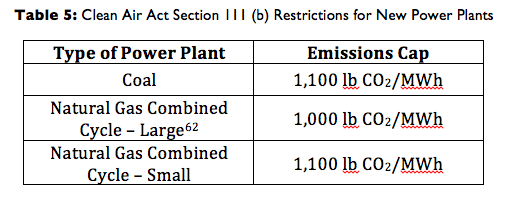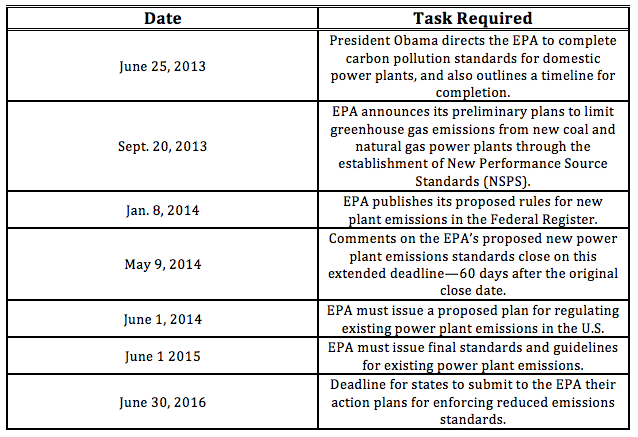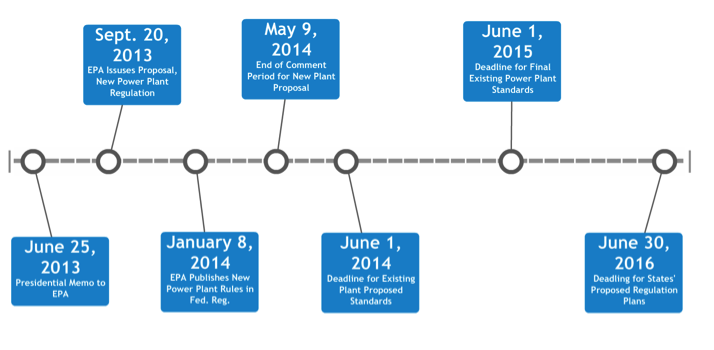The United States’ transport and energy production sectors are the nation’s key sources of emissions. Together they produce well over one half of the country’s greenhouse gases. As a result, the majority of climate policies that the U.S. currently has in place or is pursuing target these two areas. And, with CAFE standards already well-established and quite effective, a number of the new proposed regulations turn their focus on electricity production.
The U.S. EPA & the Clean Air Act
Because over a third of carbon dioxide emissions in the United States stem from the electric power industry, this sector has been targeted as one with significant greenhouse gas mitigation potential—especially in light of new and cleaner power generation technologies. The majority of emissions from this area are released through the burning of coal. Under President Obama’s Climate Action Plan, the EPA is mandated to develop a solution for setting power plant greenhouse gas emission standards in the United States. The EPA, in turn, has turned to sections 111 (b) and 111 (d) of the Clean Air Act (established in 1970 under President Nixon) as the framework and justification for establishing hard caps on new and existing power plant emissions. While the use of this law is somewhat clunky, given that it was originally developed to address acute air pollutants, it provides a surprisingly flexible basis for states to regulate their plants as they best see fit.
Existing Power Plant Regulation
Section 111 (b) of the Clean Air Act was used as the basis for an EPA proposal to regulate emissions from new gas- and coal-fired power plants. On September 20, 2013, the EPA announced this proposal and it currently remains open for comment in the federal registry, although it will be closing on May 9, 2014. The proposal states that newly constructed power plants must adhere to the following standards:
 Under these regulations, coal plants would need to install Carbon Capture and Sequestration technology, which has already been explained in the Energy Production Sector report. The timeline for installation, given that such equipment is near-prohibitively expensive, may follow one of two paths. New coal plants may be constructed with CCS installed immediately, so that they meet the 1,100 lb CO2/MWh goal over their first 12-month average, and then maintain it moving forward. Alternatively, new coal plant owners may install CCS anytime within seven years after startup, but must then achieve between 1,000 and 1,050 lb CO2/MWh for that initial seven-year average.
Under these regulations, coal plants would need to install Carbon Capture and Sequestration technology, which has already been explained in the Energy Production Sector report. The timeline for installation, given that such equipment is near-prohibitively expensive, may follow one of two paths. New coal plants may be constructed with CCS installed immediately, so that they meet the 1,100 lb CO2/MWh goal over their first 12-month average, and then maintain it moving forward. Alternatively, new coal plant owners may install CCS anytime within seven years after startup, but must then achieve between 1,000 and 1,050 lb CO2/MWh for that initial seven-year average.





Leave a Reply